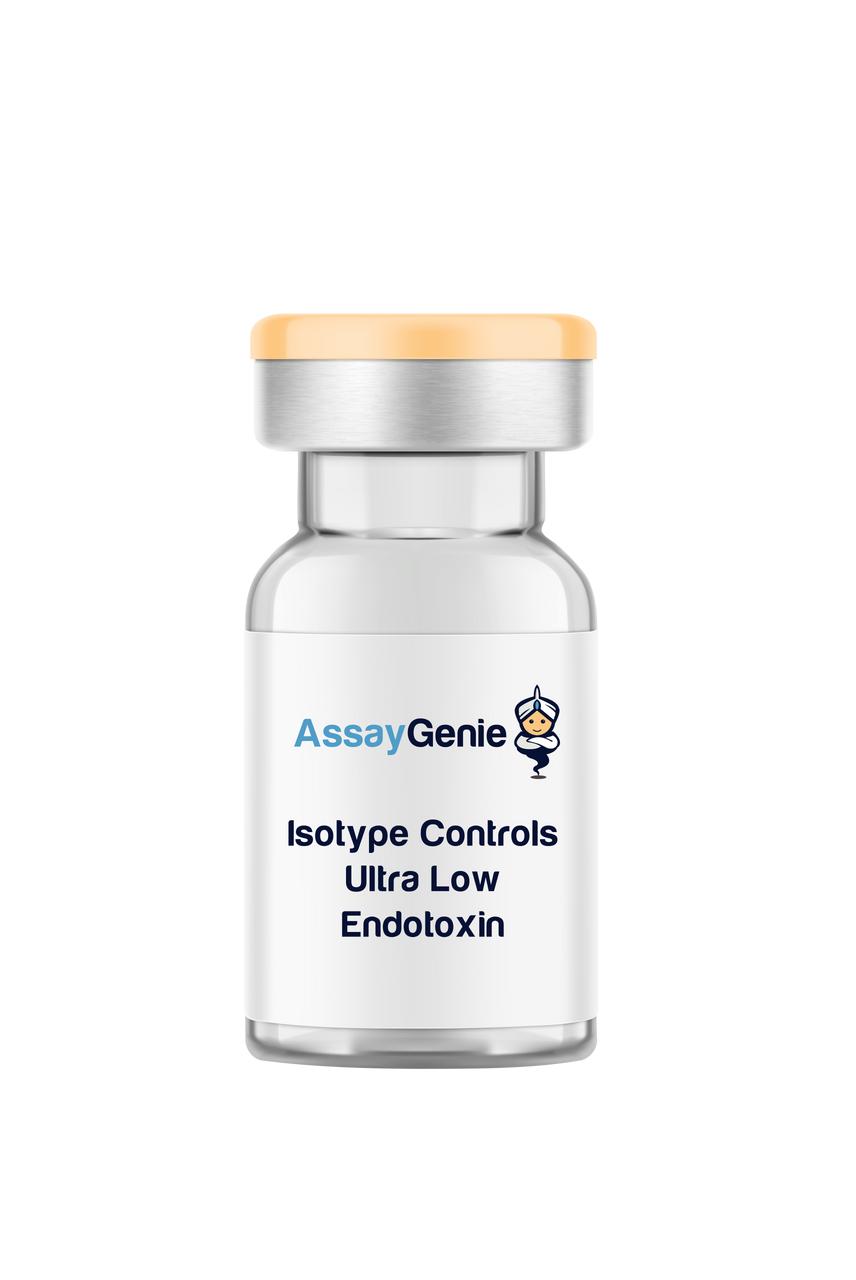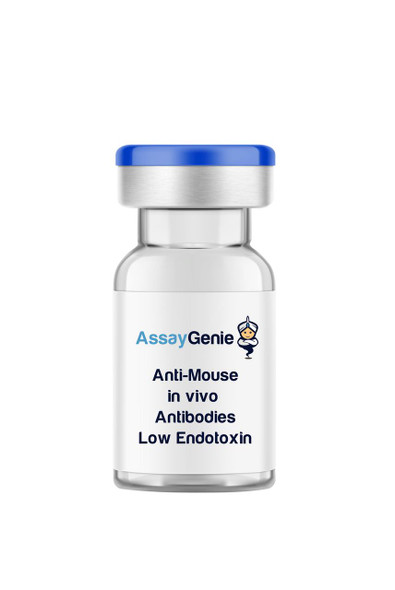Anti-Mouse PD-1 (CD279) [29F.1A12] In Vivo Antibody - Ultra Low Endotoxin
- SKU:
- IVMB0032
- Product Type:
- In Vivo Monoclonal Antibody
- Clone:
- 29F.1A12
- Protein:
- PD-1
- Isotype:
- Rat IgG2a kappa
- Reactivity:
- Mouse
- Synonyms:
- PD1
- Programmed Death-1
- CD279
- Research Area:
- Immune Checkpoint & Cancer Biology
- Endotoxin Level:
- Ultra Low Endotoxin
- Host Species:
- Rat
- Applications:
- Blocking
- CODEX
- CyTOF
- FC
- IHC FF
- WB
Description
| Product Name: | Anti-Mouse PD-1 (CD279) [29F.1A12] In Vivo Antibody - Ultra Low Endotoxin |
| Product Code: | IVMB0032 |
| Size: | 1mg, 5mg, 25mg, 50mg, 100mg |
| Clone: | 29F.1A12 |
| Protein: | PD-1 |
| Product Type: | Monoclonal Antibody |
| Synonyms: | PD1, Programmed Death-1, CD279 |
| Isotype: | Rat IgG2a κ |
| Reactivity: | Mouse |
| Immunogen: | PD-1 cDNA followed by PD-1-Ig fusion protein |
| Applications: | B, CyTOF®, FC, IHC FF, PhenoCycler®, WB |
| Formulation: | This monoclonal antibody is aseptically packaged and formulated in 0.01 M phosphate buffered saline (150 mM NaCl) PBS pH 7.2 - 7.4 with no carrier protein, potassium, calcium or preservatives added. |
| Endotoxin Level: | <0.5 EU/mg as determined by the LAL method |
| Purity: | ≥98% monomer by analytical SEC >95% by SDS Page |
| Preparation: | Functional grade preclinical antibodies are manufactured in an animal free facility using only In vitro protein free cell culture techniques and are purified by a multi-step process including the use of protein A or G to assure extremely low levels of endotoxins, leachable protein A or aggregates. |
| Storage and Handling: | Functional grade preclinical antibodies may be stored sterile as received at 2-8°C for up to one month. For longer term storage, aseptically aliquot in working volumes without diluting and store at -80°C. Avoid Repeated Freeze Thaw Cycles. |
| Applications: | B, CODEX®, CyTOF®, FC, IHC FF, WB |
| Recommended Usage: | FC WB |
| Reactivity: | Mouse |
| Host Species: | Rat |
| Specificity: | Clone 29F.1A12 recognizes an epitope on mouse PD-1. |
| Antigen Distribution: | PD-1 is expressed on a subset of CD4-CD8- thymocytes, and on activated T and B cells. |
| Immunogen: | PD-1 cDNA followed by PD-1-Ig fusion protein |
| Concentration: | ≥ 2.0 mg/ml |
| Endotoxin Level: | <0.5 EU/mg as determined by the LAL method |
| Purity: | ≥98% monomer by analytical SEC >95% by SDS Page |
| Formulation: | This monoclonal antibody is aseptically packaged and formulated in 0.01 M phosphate buffered saline (150 mM NaCl) PBS pH 7.2 - 7.4 with no carrier protein, potassium, calcium or preservatives added. |
| Preparation: | Functional grade preclinical antibodies are manufactured in an animal free facility using only In vitro protein free cell culture techniques and are purified by a multi-step process including the use of protein A or G to assure extremely low levels of endotoxins, leachable protein A or aggregates. |
| Storage and Handling: | Functional grade preclinical antibodies may be stored sterile as received at 2-8°C for up to one month. For longer term storage, aseptically aliquot in working volumes without diluting and store at -80°C. Avoid Repeated Freeze Thaw Cycles. |
PD-1 is a 50-55 kD member of the B7 Ig superfamily. PD-1 is also a member of the extended CD28/CTLA-4 family of T cell regulators and is suspected to play a role in lymphocyte clonal selection and peripheral tolerance. The ligands of PD-1 are PD-L1 and PD-L2, and are also members of the B7 Ig superfamily. PD-1 and its ligands negatively regulate immune responses. PD-L1, or B7-Homolog 1, is a 40 kD type I transmembrane protein that has been reported to costimulate T cell growth and cytokine production. The interaction of PD-1 with its ligand PD-L1 is critical in the inhibition of T cell responses that include T cell proliferation and cytokine production. PD-L1 has increased expression in several cancers. Inhibition of the interaction between PD-1 and PD-L1 can serve as an immune checkpoint blockade by improving T-cell responses In vitro and mediating preclinical antitumor activity. Within the field of checkpoint inhibition, combination therapy using anti-PD1 in conjunction with anti-CTLA4 has significant therapeutic potential for tumor treatments. PD-L2 is a 25 kD type I transmembrane ligand of PD-1. Via PD-1, PD-L2 can serve as a co-inhibitor of T cell functions. Regulation of T cell responses, including enhanced T cell proliferation and cytokine production, can result from mAbs that block the PD-L2 and PD-1 interaction.
| Technical Datasheet: | View |
| Protein: | PD-1 |
| Function: | Lymphocyte clonal selection, peripheral tolerance |
| Ligand/Receptor: | B7-H1 (PD-L1) & B7-DC (PD-L2) |

| Rat IgG2a Isotype Control | |
|---|---|
| Clone | 1-1 |
| Isotype | Rat IgG2a |
| Endotoxin Level | Ultra Low Endotoxin |

![Anti-Mouse PD-1 (CD279) [29F.1A12] In Vivo Antibody - Ultra Low Endotoxin Anti-Mouse PD-1 (CD279) [29F.1A12] In Vivo Antibody - Ultra Low Endotoxin](https://cdn11.bigcommerce.com/s-39x6lpnvxv/images/stencil/608x608/products/119780/117963/anti-mouse-pd-1-cd279-29f.1a12-in-vivo-antibody-ultra-low-endotoxin__36221__15798.1698937708.jpg?c=1)
![Anti-Mouse PD-1 (CD279) [29F.1A12] In Vivo Antibody - Low Endotoxin Anti-Mouse PD-1 (CD279) [29F.1A12] In Vivo Antibody - Low Endotoxin](https://cdn11.bigcommerce.com/s-39x6lpnvxv/images/stencil/590x590/products/119779/117962/anti-mouse-pd-1-cd279-29f.1a12-in-vivo-antibody-low-endotoxin__17775__19793.1698937708.jpg?c=1)
![Anti-Mouse PD-1 (CD279) [RMP1-14] In Vivo Antibody - Ultra Low Endotoxin Anti-Mouse PD-1 (CD279) [RMP1-14] In Vivo Antibody - Ultra Low Endotoxin](https://cdn11.bigcommerce.com/s-39x6lpnvxv/images/stencil/590x590/products/119786/117969/anti-mouse-pd-1-cd279-rmp1-14-in-vivo-antibody-ultra-low-endotoxin__19113__62377.1698937711.jpg?c=1)

![Anti-Mouse IL-2 [JES6-1A12] In Vivo Antibody - Low Endotoxin Anti-Mouse IL-2 [JES6-1A12] In Vivo Antibody - Low Endotoxin](https://cdn11.bigcommerce.com/s-39x6lpnvxv/images/stencil/590x590/products/119772/117955/anti-mouse-il-2-jes6-1a12-in-vivo-antibody-low-endotoxin__02377__93015.1698937704.jpg?c=1)




![Anti-Mouse PD-1 Antibody [RMP1-14] In Vivo - Low Endotoxin Anti-Mouse PD-1 Antibody [RMP1-14] In Vivo - Low Endotoxin](https://cdn11.bigcommerce.com/s-39x6lpnvxv/images/stencil/590x590/products/119785/117968/anti-mouse-pd-1-cd279-rmp1-14-in-vivo-antibody-low-endotoxin__18202__65875.1698937710.jpg?c=1)